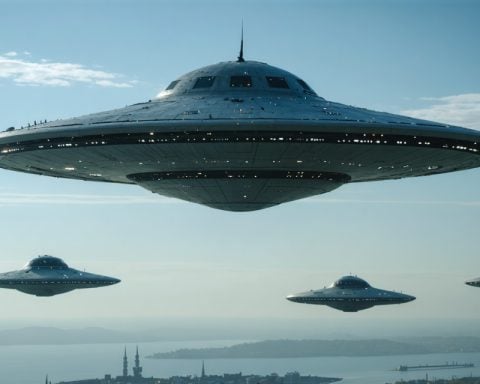- India’s NVS-02 satellite faced issues with its thrusters, preventing it from reaching the intended orbit.
- The satellite currently orbits in an elliptical Geosynchronous Transfer Orbit (GTO), rather than its designated position.
- All onboard systems are operational, with solar panels functioning and strong communication with ground control.
- ISRO engineers are exploring alternative methods to maximize the satellite’s capabilities despite its current position.
- The launch was overall successful, showcasing ISRO’s efficient GSLV rocket performance and adaptability in challenging scenarios.
- ISRO’s ability to learn from setbacks emphasizes its resilience and commitment to advancing satellite technology.
India’s ambitious plans for a cutting-edge space-based navigation system faced a hiccup when the NVS-02 satellite’s thrusters stubbornly refused to fire. Launched aboard the historic GSLV-Mk 2 rocket on January 29, marking ISRO’s monumental 100th flight from Shriharikota, the satellite’s journey took an unexpected turn just days later.
ISRO revealed that the crucial valves needed to ignite the thrusters for orbit raising remained defiantly shut, preventing the satellite from reaching its designated position. As a result, NVS-02 now orbits in an elliptical Geosynchronous Transfer Orbit (GTO), a far cry from the ideal spot it needs for effective navigation services.
On a brighter note, all onboard systems are functioning well. Solar panels unfolded successfully, powering the satellite with ease, and communication with ground control is robust. ISRO engineers are now brainstorming alternative methods to utilize the satellite’s capabilities from its current orbit, ensuring that valuable data and services are not lost.
Despite the setback, the overall launch was deemed a success, with the GSLV rocket performing flawlessly across all stages. This situation underscores the resilience and adaptability that defines India’s space program.
The key takeaway? While challenges in space exploration are inevitable, ISRO is adept at turning potential failures into learning opportunities, paving the way for future successes in the realm of satellite technology. Stay tuned as they redefine navigation in the skies!
India’s Space Ambitions in Jeopardy: A Satellite Challenge and Future Prospects!
Introduction
India’s ambitious plans for a state-of-the-art space-based navigation system hit a snag recently when the NVS-02 satellite faced issues with its thrusters. Although launched successfully aboard the GSLV-Mk 2 rocket on January 29, this satellite’s trajectory was unexpectedly altered due to a malfunction. Let’s delve into the implications, insights, and future of India’s space navigation.
Current Status and Features of NVS-02
The NVS-02 satellite is part of India’s Navigation with Indian Constellation (NavIC) system designed to provide accurate position information to users in India and surrounding regions. Here are its key features:
– Operational Capabilities: NVS-02 is meant to support precise positioning services for various applications such as agriculture, surveying, and disaster management.
– Technical Specifications: The satellite is equipped with advanced atomic clocks and high-performance antennas.
– Robustness: Communication with ground control has been successful, despite the thruster issue, indicating resilience in its design.
Pros and Cons of the Current Situation
Pros:
– Functional Systems: All onboard systems, including solar panels and communication links, are operational.
– Invaluable Data Collection: The satellite can still gather and send data from its current orbit.
Cons:
– Orbit Limitations: NVS-02’s inability to reach its designated orbit limits its effectiveness in delivering navigational services.
– Increased Challenges: ISRO engineers face the challenge of maximizing the satellite’s potential from its GTO, which wasn’t the intended outcome.
Market Insights and Future Trends
The satellite and its operational challenges highlight the unpredictable nature of space navigation systems. As emerging players in satellite technology rise globally, India needs to address limitations and enhance reliability.
Market Forecast:
– Growth in Satellite Navigation: The global satellite navigation market is projected to grow significantly over the next decade, driven by advancements in technology and increasing demand for GPS services.
– ISRO’s Strategic Position: With its robust planning and adaptability, ISRO can capitalize on unforeseen challenges, turning them into a competitive advantage.
Innovations and Learnings
ISRO’s approach to addressing the NVS-02’s challenges showcases its innovative spirit. The organization may consider various approaches, such as:
– Alternative Orbital Configurations: Utilizing its current orbit for specific applications.
– System Upgrades: Enhancements in future satellite designs or ground station technology to prevent such malfunction issues.
FAQs
1. What caused the thruster malfunction of NVS-02?
The malfunction was attributed to the valves that failed to open, thus preventing the thrusters from firing. Engineers are investigating the underlying causes to prevent future occurrences.
2. How does NVS-02 contribute to India’s navigation system?
Despite being in a less-than-ideal orbit, NVS-02 can still provide navigational data, thus enhancing the overall capacity of India’s NavIC system.
3. What are the implications of the current satellite status on future launches?
The situation reflects the complexities of space missions, emphasizing the need for rigorous testing and contingency planning in satellite launches, which ISRO can implement in future projects.
Conclusion
While the NVS-02 satellite’s challenges raise concerns, they also reflect the resilience and adaptability of ISRO. The organization’s ability to extract learnings from setbacks is crucial as it continues to innovate in the competitive field of satellite technology. Stay tuned for ongoing developments as ISRO navigates through this space exploration journey!
For more insights on India’s space initiatives, visit ISRO’s official website.



















